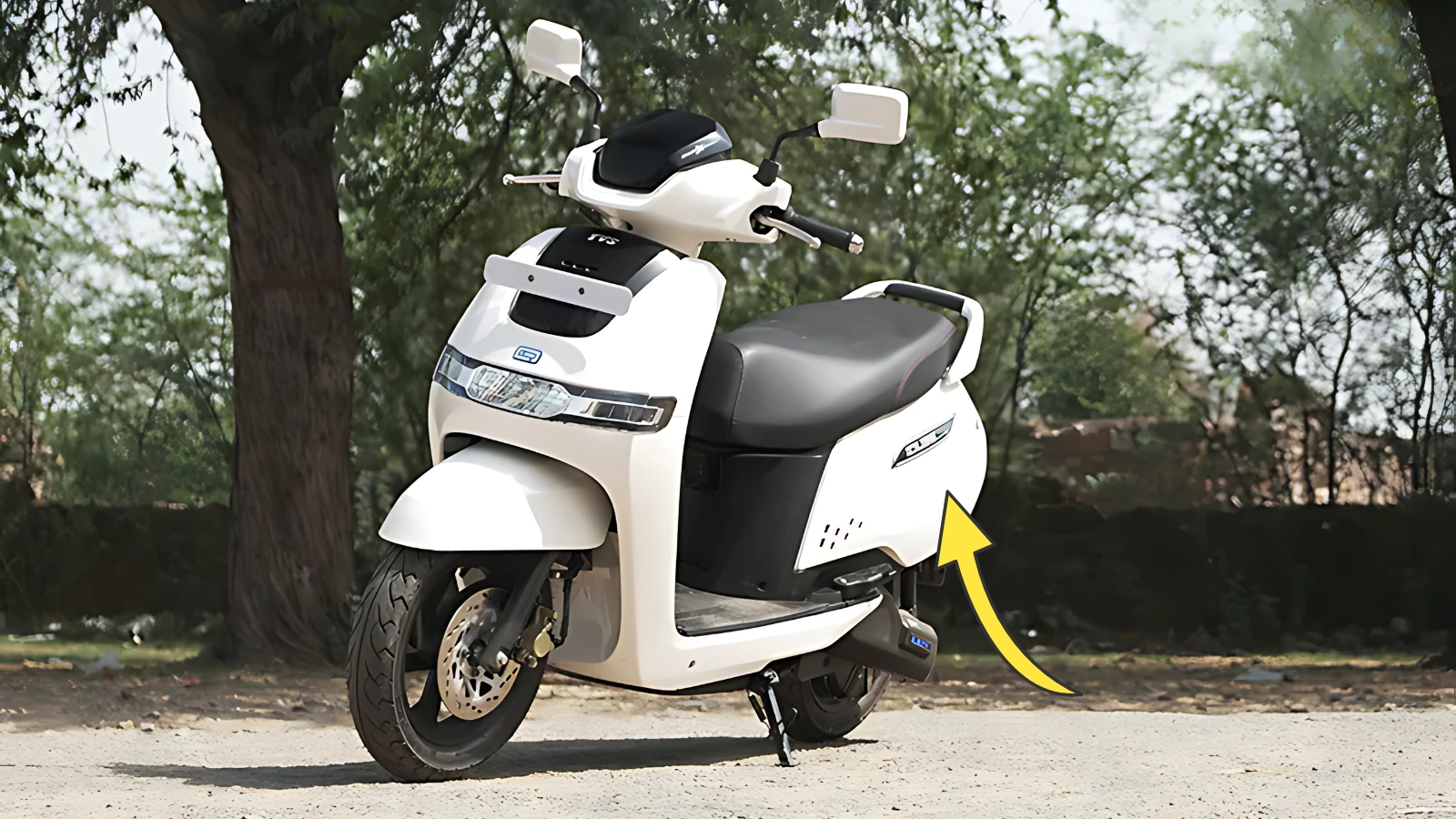TVS iQube: I’ve always been skeptical about electric vehicles – the promises often outshine the reality. Yet, after three weeks and 400-odd kilometers astride the TVS iQube, I’m forced to reconsider my stance. This isn’t just another half-baked attempt at electrification; it’s a mature product from a manufacturer who clearly understands Indian riding conditions. Has TVS cracked the formula for a practical everyday electric scooter? Let’s find out.
Design: Subtlety Trumps Showboating
In a segment where manufacturers seem compelled to create bizarre, space-age designs, the iQube’s restrained styling comes as a refreshing change. It doesn’t scream “I’m electric!” through odd proportions or garish blue accents. Instead, you get clean lines, decent proportions, and just enough futuristic touches to hint at its electric heart.
What caught my eye wasn’t any single design element, but rather how cohesively everything fits together. The LED headlamp with its distinctive DRL signature integrates seamlessly into the front apron. The body panels fit with a precision that speaks of careful manufacturing rather than rushed production. Even the seat – often an afterthought on many scooters – features quality stitching that remained intact despite my 87-kilo frame bouncing over Mumbai’s notoriously uneven roads.

The Riding Experience: Surprisingly Engaging
Twist the throttle, and the immediate torque delivery provides that characteristic electric surge forward. With 4.4kW of peak power and 140Nm at the wheel, the iQube isn’t setting any performance records, but it strikes a sweet spot for urban commuting. The three riding modes (Eco, Ride, Sport) actually deliver noticeably different characters rather than marginal variations – I found myself using Eco for leisurely weekend rides, Ride for daily commuting, and occasionally switching to Sport when traffic gaps needed to be exploited.
During a particularly heavy downpour on Marine Drive, the scooter’s stability impressed me. The low center of gravity (thanks to the floor-mounted battery) kept things planted even when navigating through waterlogged patches that had other two-wheelers wobbling nervously. The CBS braking system provides adequate stopping power, though I’d have appreciated a bit more initial bite during emergency stops.
Range Reality: Beyond the Brochure Claims
Range anxiety – those two words keep many potential buyers away from electric vehicles. TVS claims up to 100km on a full charge for the top-spec S variant I tested. Remarkably, real-world performance isn’t far off. In mixed riding conditions with liberal use of Sport mode, I consistently achieved 85-90km per charge.
What impressed me more than the raw figures was the range predictor’s accuracy. Unlike some electric vehicles I’ve tested where the range estimate plummets mysteriously, the iQube’s display provided consistent and reliable predictions. During an unexpected detour to my cousin’s place that added 12km to my planned journey, I arrived home with 11% battery remaining – almost exactly what the scooter had predicted at the start of the diversion.
Tech That Actually Works
The 7-inch TFT display on higher variants deserves special mention – it remains clearly visible even under harsh direct sunlight, a rare feat in this segment. The companion app works surprisingly well, offering useful functions like remote monitoring, ride statistics, and navigation without feeling unnecessarily complicated.
During a particularly hot afternoon, the ability to check charge status remotely saved me from a sweaty walk to the basement parking just to discover I needed more charging time. The turn-by-turn navigation, while basic, proved adequate for finding my way to an unfamiliar restaurant in Bandra’s maze-like lanes.
Living With Electricity: The Practical Realities
The iQube comes with a standard charger that plugs into any 5A socket. A full charge from empty takes roughly 5 hours on the standard variant and 7 hours on the S variant with its larger battery. This worked perfectly with my routine – plug in when returning from work, and it’s ready well before morning.
What about apartment dwellers without dedicated parking? I tested this scenario by running the charging cable from my fourth-floor window to the society parking lot (with permission from the secretary, of course). While not ideal, it proved workable for occasional charging. For daily use, access to a ground-floor charging point would be preferable.
TVS iQube: Value Proposition: Does the Math Work Out?
Priced between ₹1.15 lakh and ₹1.61 lakh (ex-showroom), the iQube positions itself in the premium electric scooter segment. Running costs work out to roughly ₹0.50 per kilometer (based on Mumbai electricity rates) – substantially lower than the ₹2.50-3.00 per kilometer for a comparable petrol scooter.
For my 30km daily commute, this translated to monthly savings of approximately ₹2,100. Factor in the minimal maintenance requirements (no oil changes, fewer moving parts), and the higher initial investment begins to make financial sense over a 3-4 year ownership period.
After three weeks together, returning the test vehicle felt surprisingly disappointing – perhaps the strongest endorsement I can give. The iQube isn’t perfect, but it’s a convincing argument that electric scooters can be practical everyday transportation rather than just novelty purchases.